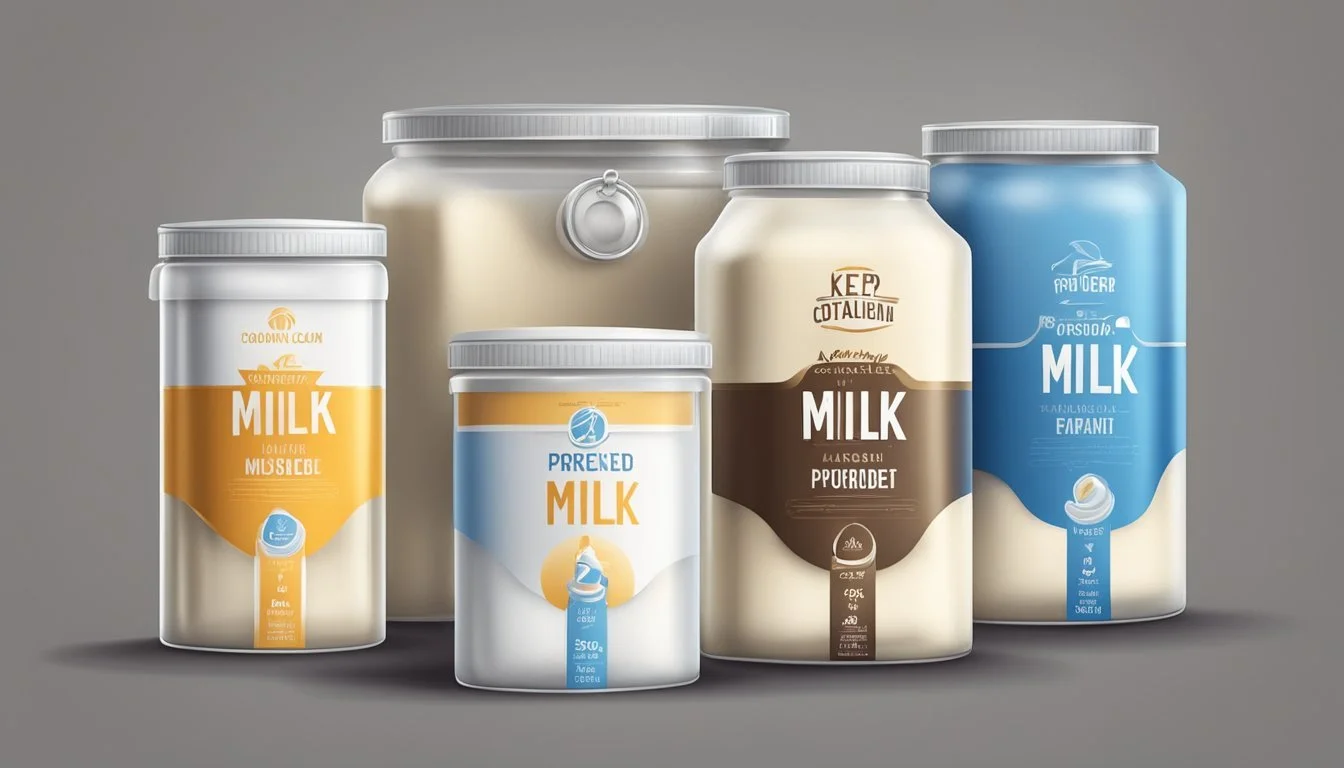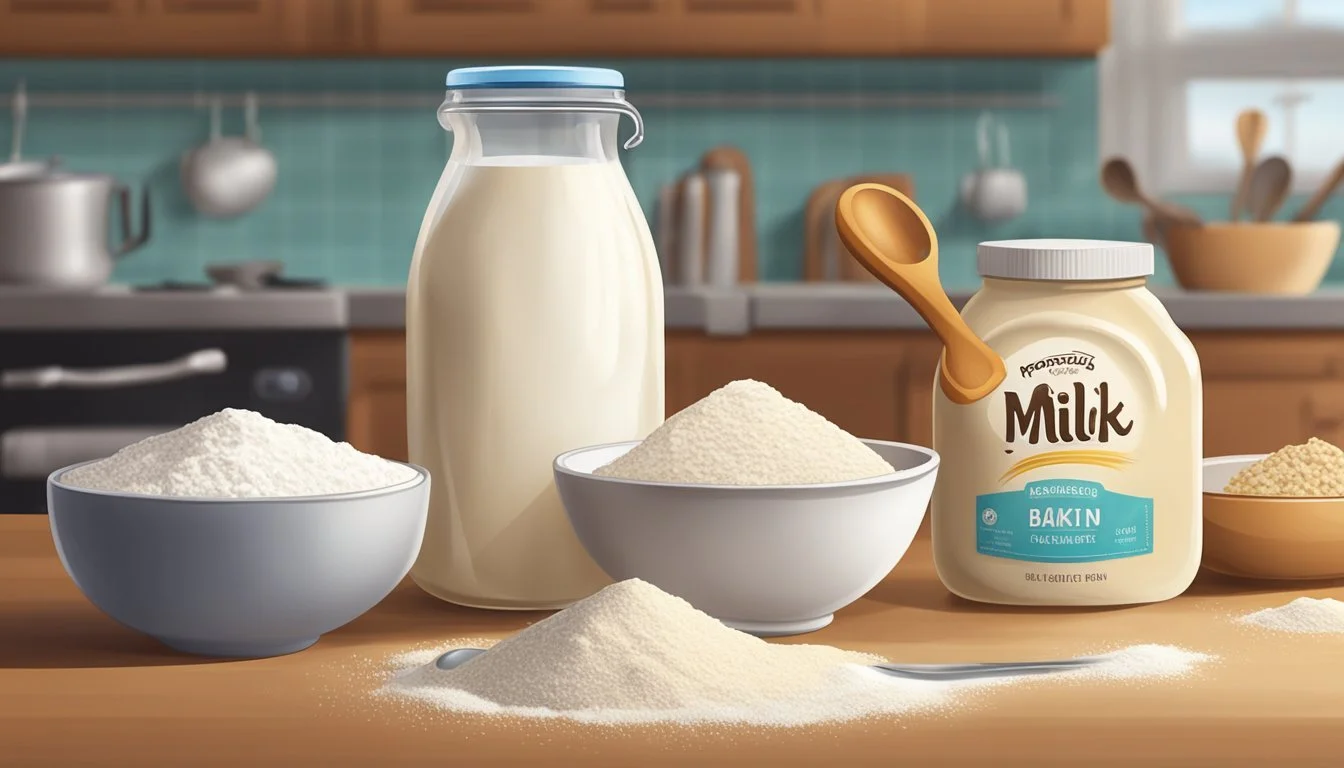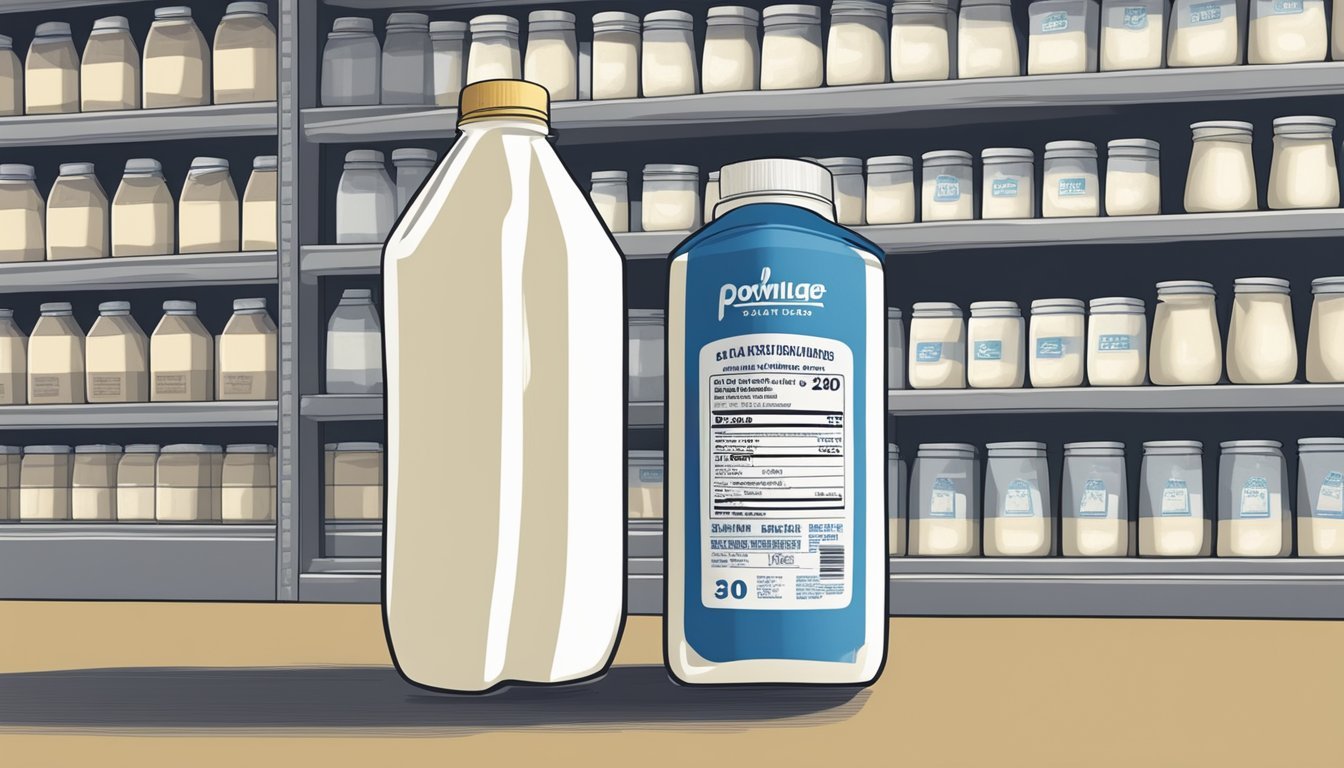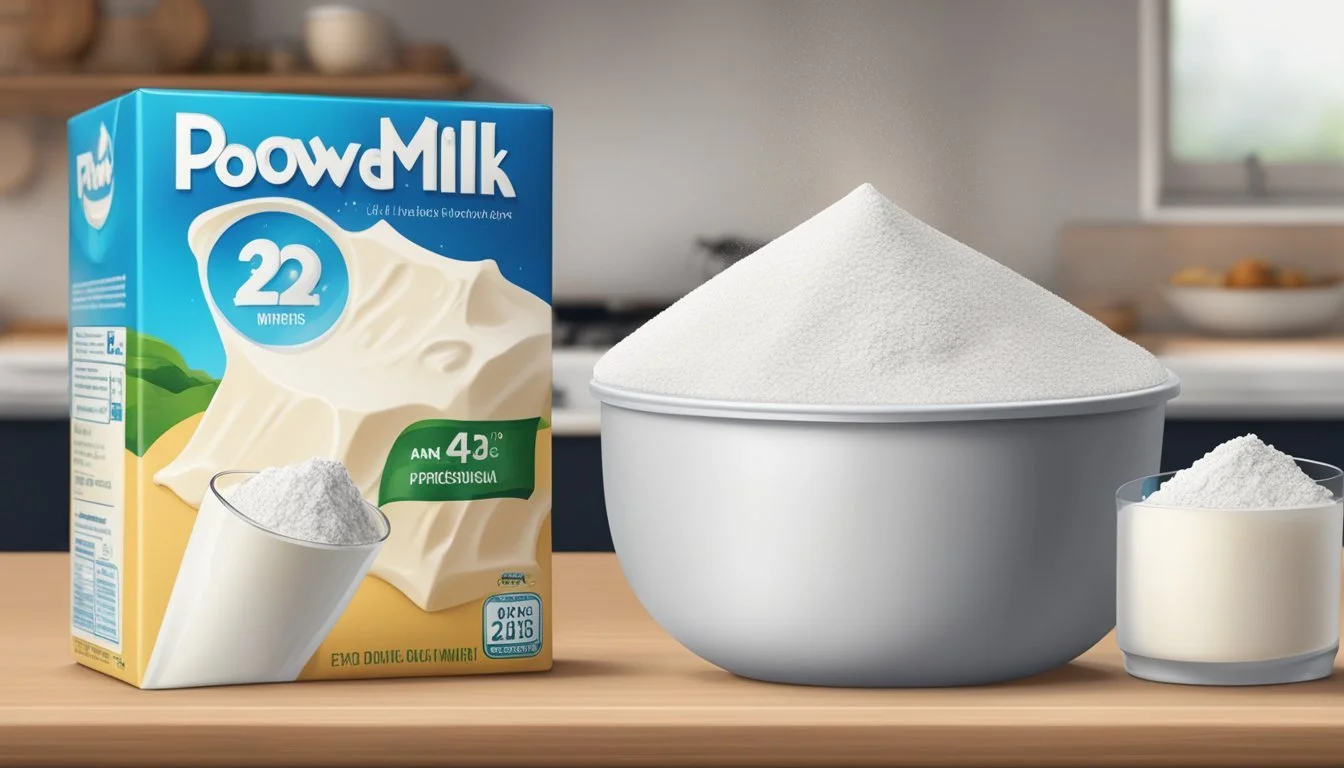Does Powdered Milk Go Bad?
Shelf Life and Storage Tips
Powdered milk is a staple in many households due to its long shelf life and convenience. Yet, many wonder whether it can go bad. The answer is yes, powdered milk can indeed go bad, especially if it is not stored properly or if it surpasses its "best by" date. Most manufacturers recommend using it within 18 months, but under ideal conditions, it can last 2 to 10 years beyond that date.
Different factors play a role in determining how long powdered milk remains usable. Storage conditions are crucial; keeping it in a cool, dry place extends its longevity. Unopened powdered milk generally keeps well, while opened packages should be used more promptly. Once mixed with water, powdered milk needs refrigeration and should be consumed within a few days.
Understanding the nuances of powdered milk’s shelf life helps in making the most of this pantry staple. Whether you use it as a milk substitute in recipes or as a convenient coffee creamer, knowing how to store it and recognizing the signs of spoilage are essential for maintaining its quality and safety.
Understanding Powdered Milk
Powdered milk, a versatile dairy product, is produced through a dehydration process that extends its shelf life significantly. This type of milk, which can vary in fat content, retains essential nutrients even in its dry form.
Production and Types of Powdered Milk
Powdered milk is made by evaporating water from regular milk until it transforms into a dry, powdery substance. This dehydration process involves several stages, including pasteurization, evaporation, and spray drying.
Types of powdered milk include:
Whole milk powder: retains all milk fat.
Nonfat dry milk: nearly all fat removed, used in cooking and baking.
These products differ in fat content and storage life, with nonfat dry milk generally lasting longer.
Nutritional Value of Powdered Milk
Powdered milk retains a substantial portion of the nutrients found in fresh milk. It is an excellent source of protein, providing essential amino acids.
Nutritional components include:
Proteins: support muscle repair and growth.
Carbohydrates: supply energy.
Vitamins and minerals: such as Vitamin D, calcium, and potassium, crucial for bone health.
The nutritional content varies slightly depending on whether it is whole milk powder or nonfat dry milk.
Both types serve as effective dietary supplements, especially in regions where fresh milk is scarce.
Shelf Life and Expiration
Powdered milk has an extended shelf life compared to liquid milk, thanks to its low moisture content. Despite this, it still has an expiration date, and various factors can impact how long it remains safe and usable.
Determining the Expiration Date
Manufacturers typically indicate a "best by" date on powdered milk packaging. This date provides an estimate of when the product will be at its optimal quality. Although powdered milk can remain usable for several years beyond this date, flavor and nutritional content may decline.
For instance, an unopened package usually has a shelf life of 2 to 10 years, depending on storage conditions. Once opened, it should ideally be used within 3 to 6 months to ensure the best quality.
Factors Affecting Powdered Milk Shelf Life
The storage conditions significantly influence the shelf life of powdered milk. To maximize longevity, it should be kept in a cool, dry place, away from direct sunlight. Humidity and temperature fluctuations can lead to spoilage, making airtight containers a preferable storage option.
Another critical factor is the moisture content. Exposure to air can introduce moisture, leading to clumping and potential spoilage. Therefore, after each use, it’s crucial to seal the package tightly.
Lastly, using a vacuum-sealed container or oxygen absorbers can further extend the shelf life by reducing the risk of oxidation, which can degrade the product over time.
Proper Storage Practices
Proper storage is essential to extend the shelf life of powdered milk. Different methods are required for storing unopened and opened powdered milk, as well as freezing it for long-term use.
Storing Unopened Powdered Milk
Unopened powdered milk should be kept in a cool, dry place to maintain its quality. The pantry is often the ideal location as it provides a stable environment. It is crucial to store it in an airtight container if the original packaging is damaged or compromised.
Avoid areas with fluctuating temperatures or high humidity, such as near stoves or refrigerators. The optimal storage temperature is between 50°F and 70°F. Keeping it away from direct sunlight will help prevent degradation of the nutrients and maintain freshness.
Storing Opened Powdered Milk
Once opened, powdered milk must be transferred to an airtight container to prevent moisture and contaminants from entering. A food-grade plastic or glass container works best for this purpose. Ensure the container is resealed tightly after each use.
Store the container in a cool and dry place, similar to where unopened powdered milk is kept. Maintaining a storage temperature around 50°F to 70°F is recommended. Labeling the container with the opening date can help track its usability, as opened powdered milk generally remains fresh for 1 to 2 years past the "best by" date if stored properly.
Freezing Powdered Milk for Extended Shelf Life
For the longest shelf life, freezing powdered milk is a viable option. Use an airtight, freezer-safe container to store the milk powder. Before placing it in the freezer, ensure the container is well-sealed to prevent moisture from entering.
Freeze at a consistent 0°F or below. When ready to use, allow the powdered milk to return to room temperature while still sealed to avoid condensation forming inside the container. Freezing powder milk can extend its shelf life indefinitely, but it helps to keep the packaging date visible for reference.
By following these practices, one can effectively maintain the quality and usability of powdered milk for an extended period.
Identifying Signs of Spoilage
When determining if powdered milk has gone bad, it's crucial to look for visual and textural changes as well as odor and flavor alterations.
Visual and Textural Changes
Visual inspection is the first step in identifying spoiled powdered milk. Signs of spoilage include changes in color, with a yellow color often indicating that the product is no longer safe to use. Clumping or the presence of clumps is also a key indicator of moisture exposure, which can lead to spoilage.
Additionally, the presence of insects or foreign particles is an immediate sign that the powdered milk should be discarded. A change in the texture, such as becoming sticky or hard, also signals that the milk powder has degraded and might be rancid or unsafe to consume.
Odor and Flavor Alterations
Spoiled powdered milk often exhibits noticeable changes in odor and flavor. A rancid smell or an off-flavor can be strong indicators that the product has gone bad. Fresh powdered milk should have a neutral, slightly sweet smell, so any deviation from this is a sign of spoilage.
It’s vital to perform a small taste test to detect any subtle changes in flavor before using the powdered milk extensively. If the taste is sour, bitter, or otherwise unpleasant, it is best to discard it. Safety should always be the priority when assessing food quality.
Utilizing Powdered Milk in Cooking and Baking
Powdered milk offers versatility in the kitchen, serving as a convenient substitute for fresh milk in various recipes. It's especially useful in baking and can be applied in several other culinary functions.
Powdered Milk in Baking Recipes
In baking, powdered milk enhances the consistency and moisture of breads, cakes, and cookies. High-heat nonfat milk powder is particularly beneficial, as it contains more denatured proteins which aid in dough conditioning.
Replacing fresh milk with powdered milk involves mixing it with water, generally one part powder to three or four parts water depending on the type—whole or non-fat. This reconstituted milk can be directly used in recipes without further adjustments.
Bakers often include powdered milk in brioche and other enriched doughs due to its ability to promote even browning and tenderness.
Alternative Uses of Powdered Milk in the Kitchen
Beyond baking, powdered milk proves valuable in various culinary contexts. It can be used to create creamy sauces, soups, and casseroles by reconstituting it with water for a milk substitute.
Powdered milk is also used in making homemade yogurt. By mixing it with a yogurt starter culture, it can produce smooth and creamy yogurt.
Additionally, powdered milk can serve as a whitener for coffee or tea, offering a convenient, non-perishable alternative to fresh milk.
Its stability and extended shelf life make it an essential pantry item for enhancing flavors and textures in diverse kitchen applications.
Impact of Environment and Packaging
The longevity of powdered milk is significantly influenced by the storage environment and the integrity of its packaging. These factors play a crucial role in preventing spoilage and maintaining the quality of the product.
Influence of Storage Environment
Storage environment greatly affects the shelf life of powdered milk. Powdered milk should be kept in cool, dry places to avoid exposure to moisture, which can lead to bacterial growth and spoilage. Excessive heat and direct sunlight can cause oxidation, resulting in deterioration of flavor and nutritional value.
Consistency in temperature is key. Environments with fluctuating temperatures can compromise the milk’s stability. Refrigeration is not necessary for unopened powdered milk; however, once opened, storing it in a dry, airtight container in a pantry can prolong its usability.
Importance of Packaging Integrity
The packaging of powdered milk is designed to protect it from environmental factors. Sealed packaging prevents exposure to air and moisture, both of which can lead to spoilage. Aluminum-lined bags and airtight cans are common packaging methods that enhance longevity by creating barriers to sources of heat and light.
Breaches in packaging integrity can result in rapid deterioration. Even minor damages can allow air and contaminants to enter, leading to oxidation and microbial growth. Ensuring the packaging is intact before storage is essential for maximizing shelf life.
Health and Safety Considerations
Proper storage and assessment of powdered milk are crucial for ensuring its safety and longevity. This involves understanding how to prevent bacterial growth and insect infestation, and knowing how to evaluate whether the product is still safe to consume.
Preventing Bacterial Growth and Insect Infestation
To minimize the risk of bacterial growth, it's important to store powdered milk in a cool, dry place. An airtight container can protect the milk from moisture and contamination.
Storing it away from direct light and heat will further extend its shelf life. Extreme temperatures can cause degradation and promote the growth of bacteria and other microorganisms.
Insect infestation is another concern. Powdered milk should be kept in sealed, insect-proof containers to avoid contamination. Vacuum packing or using oxygen absorbers can be effective.
Regularly checking for signs of infestation, such as clumped powder or visible insects, can help prevent these issues.
Assessing Powdered Milk for Safe Consumption
Assessing powdered milk for safe consumption involves checking for any changes in appearance, odor, and taste. If the powder has clumps, discoloration, or an off smell, it may be spoiled.
Using all senses to examine the product is key. Mixing a small amount with water can help determine if it has an unusual taste or texture.
The USDA advises that powdered milk can be safe to consume for years past its "best by" date if stored properly. However, compromised packaging or improper storage can render it unsafe.
Checking the package for any signs of damage, such as tears or punctures, can help ensure safe consumption.
Advantages for Emergency Preparedness
Powdered milk offers significant benefits for those focused on emergency preparedness. It provides necessary nutrition and has impressive longevity when stored correctly.
Powdered Milk as a Staple in Emergency Kits
Preppers and those involved in emergency preparedness recognize powdered milk as a versatile staple. It retains many nutrients found in fresh milk such as calcium, protein, and vitamin D, which are crucial during emergencies when a balanced diet might be hard to maintain.
Instant nonfat dry milk is commonly used because it mixes easily with water. This makes it convenient for quick meals. Because it is lightweight and has a compact form, it is ideal for inclusion in emergency kits where space and weight are limited.
Longevity and Preservation Methods
Powdered milk's shelf life is one of its biggest advantages for long-term food storage. When stored in a cool, dry place, many brands last between 2-10 years. Some can even last up to 25 years if kept in optimal conditions, making it a reliable option for extended emergencies.
Proper preservation methods are key. Use airtight containers to keep out moisture and light. Adding oxygen absorbers or using a vacuum sealer can significantly extend its shelf life. Ensuring these preservation steps will help maintain the milk's quality and nutritional value over time.
Conclusion
Powdered milk can go bad, but its shelf life is significantly longer than that of fresh milk. Typically, manufacturers recommend using it within 18 to 24 months, although it remains usable much longer if stored correctly.
An unopened package can maintain freshness and nutritional value for years, sometimes even 2 to 10 years beyond the "best by" date. Proper storage conditions include keeping it in a cool, dry place to maximize longevity.
Consumers should monitor signs of spoilage, such as off smells or changes in appearance. When it remains fresh, powdered milk is a convenient and valuable option, providing essential nutrients similar to liquid milk.
Usage Tips:
Storage: Keep in sealed containers.
Environment: Store in a cool, dry place.
Monitoring: Check for spoilage signs before use.
In essence, while powdered milk is exceptionally durable, attention to storage conditions is crucial for maintaining its usability and nutritional value.









